The capital of Belgium and the European Union - Brussels captivates tourists with its fabulous view, given by the grace of buildings, squares and parks at any time of the year. Among the rainbow kaleidoscope of sights, the museums of Brussels stand out brightly for their architecture, priceless old and modern exhibits. They open to guests the wonderful world of Belgian and Western European art, acquaint with the pages of the history of the city and country, reveal the amazing secrets of the natural sciences, acquaint with the culture and life of the people.
Royal Palace

In the center of the Belgian capital, in the exquisite landscape of the Brussels Park, the neoclassical building of the Royal Palace looks harmoniously on a hill. Founded in the 18th century, today it appears in the form that was given to the facade in 1904. Previously, the palace was the residence of the Belgian monarch, today it hosts celebrations and official receptions. In summer, from 21 July to 3 September, guests and residents of Brussels can visit it free of charge.
Climbing the main staircase, visitors can see the majestic interior of the Throne Hall, which was intended for balls. It amazes with the gilded decor of Corinthian columns and walls, the shine of luxurious crystal chandeliers. Particularly fascinating is the Mirror Room with the ceiling decorated with gilded stucco molding in the form of the wings of scarab beetles. The decoration of the Imperial Room is complemented by 11 golden flower pots, symbolizing 11 Belgian provinces. After going to the Royal Chambers, visitors will find out what kind of environment the monarchs lived in. Days and times to visit the palace: Tuesday - Sunday from 10 am to 5 pm.
Bellevue History Museum

The Bellevue Museum, located in 1977 in an 18th century building attached to the Royal Palace, is dedicated to the history of Belgium. In the past centuries, people of royal blood lived here, and then there was an elite hotel Bellevue. The three-storey building retains the spirit of the 18th century, emanating from the archival documents of the Belgian Royal Dynasty and the interior decor inherent in the Royal Palace.
The rooms on two floors have preserved the 18th century furnishings in the style of Louis XV, Empire and Napoleon III, with decorative elements, furniture, clothing and accessories of the royals who lived there. The courtyard has been turned into a Winter Garden with exotic trees and flowers, which is accessible to tourists. From the windows it is pleasant to admire the view of the Mount of Arts and Brussels Park. It is open all week from 10.00 to 17.00, and from June to September it is open until 18.00.
Royal Museums of Fine Arts
The largest collection of ancient and modern artistic masterpieces of the Belgian capital is preserved and exhibited in the unique complex of the Royal Museums of Fine Arts. The beginning was laid by Napoleon in 1801. Since then, it has grown into a complex of 6 museums, open for free on the first Wednesday of the month.
Closed only working every 2nd Thursday of the month and on holidays: January 1, May 1, November 1, November 11 and December 25. Three museums - Contemporary Art, Fin-de-Siecle ("End of the Century") and Ancient Art are nearby. As a rule, tourists begin their acquaintance with the artistic treasury of Brussels with them.
Modern Art Museum

It is housed in the imposing neoclassical building of the Royal Museum of Fine Arts, designed by the architect Alfonso Balat and erected in 1890 on Rue dela Regence. It acquaints visitors with a wide range of genres of art by Belgian artists. The paintings by David and his follower Auguste are masterpieces of neoclassicism. National trends are reflected in the romantic creations of the artists Delacroix and Gericault.
Lovers of realism will be interested in the paintings created by Courbet and Meunier. An extensive art exposition in the genre of impressionism is demonstrated by the paintings of Sisley, Klaus and other prominent artists of Belgium. An exhibition of paintings by renowned artist René Magritte is immersed in the world of surrealism. Open: Tuesday-Friday from 10.00 to 17.00, on weekends - 11.00 - 18.00.
Museum of the "end of the century"

The opening of Fin-de-Siecle took place in December 2013 in a building completed to the main building of the Royal Museum, connected to it by a passage. On 2 floors, in spacious halls, artworks are exhibited representing the genre and thematic diversity that prevailed at the end of the past century. Paintings depicting workers, peasant labor and romantic ladies, created in the manner of impressionism, neo-impressionism and surrealism, belonging to the brush of Gauguin, Van Gogh, Sisley, Seurat, Bonnard, Dali, Dufy.
Admirers of modernism will enjoy the work of Alphonse Much and the artsy modernist furniture with floral motifs. A large collection of exquisite glass items will also attract attention. Working hours: Tuesday - Friday: from 10.00 to 17.00, on weekends: 11.00 - 18.00. From it on the way you get to the Museum of Old Masters.
Museum of Old Masters

Occupies the opposite wing of the main building. It keeps an extensive collection of art works of the 15th-17th centuries: 1200 paintings, sculptures and drawings. Climbing up from the central hall along the majestic staircase, you find yourself in the inspired atmosphere of the exhibition halls, represented mostly by the work of Flemish fine art masters.
An entire floor is occupied by paintings of the 15th-16th centuries: from numerous representatives of Flemish primitivism with the famous work of Bosch "The Temptation of St. Anthony" to paintings by artists from the schools of painting in Antwerp and Bruges. One of the halls immerses you in the work of David, striking the mastery of the painting "Death of Marat". The era ends with the artistic heritage of Bruegel's father and son with the famous paintings of Pieter Brueghel the Elder - "The Fall of Rebel Angels", "Landscape with the Fall of Icarus and Onlookers", "Winter Landscape with a Bird Trap".
The paintings on the third floor represent the 17th-18th centuries. Here are exhibited paintings famous to the world, painted by Jordaens, van Dyck, Memling and Rubens, in whose gallery admire - "Christ and the Harlot" and "Carrying the Cross". You can see the masterpieces: Tuesday - Friday from 10.00 to 17.00, Saturday and Sunday from 11.00 to 18.00.
Rene Magritte Museum

Belgian artist Rene Magritte is famous all over the world for his surreal canvases. It attracts the eye with its colorful facade, designed as a sketch of his painting "Empire of Light". An amazing surrealistic collection, located on 2500 m², is represented by the author's mysterious 200 creations - paintings, drawings, sculptures, sketches, advertising posters, capturing the master's fantasy world.
Magritte's life and career is reflected in numerous photographs, documents, musical scores and personal belongings. In a small cinema hall, a film is shown about the life and career of a creative artist. The exposition is available from Tuesday to Sunday from 10.00 to 17.00.
Bedford Hotel & Congress Center
Brussels
Just 450 meters from the Grand Place

Motel One Brussels
Brussels
10 minutes from Grand Place and Manneken Pis Statue

Hygge Hotel
Brussels
Walking distance from Egmont Palace, Rene Magritte Museum
Good based on 1,794 reviews

Antoine Wirtz Museum

The Museum of the outstanding Belgian sculptor and painter, the romantic school of 19th century painting, Antoine Wierz, is housed in the artist's former studio in the Parliamentary Quarter of the Ixelles district. In a small studio room, connoisseurs of Wirtz's work will plunge into the atmosphere of the creator's spiritual world, emanating from his monumental canvases, drawings and sculptures, created under the influence of Rubens, who became his spiritual idol.Both the size of Wirtz's canvases, from 8 to 16 meters in height, and the inclusion of otherworldly forces and terrifying characters in the form of a devil, a mythical monster, a skeleton, are striking.
The artist was inspired by the dark sides of life, from where scenes of executions and deaths appear from the paintings. Portraits, self-portraits and skilfully painted pictures make a strong, chilling impression on the soul. Days and times of visit: Tuesday - Friday from 10.00 to 17.00, with a break: 12.00 -12.45. On weekends, it only accepts tourist groups.
Constantin Meunier Museum

Constantin Meunier, a master who created in a realistic manner in sculpture and painting, devoted most of his work to the images of a person engaged in creative work. The museum representing his artistic heritage, affiliated with the Royal Museum of Fine Arts, is located in the house that housed his art workshop on Abbey Street in the suburban area of Ixell. The collection contains more than 700 sculptural and painting works, illustrating the creative path of the master.
The initial stage was represented by social painting and graphics, and the period from 1875 to 1905 was manifested by the flourishing of sculptural works, reflecting the labor and political life of that time. Workers, dock workers and miners appear in a gallery of realistic sculptures. The sculptural image of a mother grieving over her murdered son is especially striking. You can view the exposition free of charge: from Tuesday to Friday from 10.00 to 17.00, with a break from 12.00 to 13.00.
Atomium

The futuristic building is a 102-meter-high structure in the form of a copy of an iron atom, magnified 165 billion times, focusing the attention of mankind on the peaceful purpose of the atomic era. The structure of the Atomium appears as pipes connecting 9 spheres. It is noteworthy that in its 6 areas, where visitors are transported through giant pipes using escalators, are equipped with a small hotel, cafes and museum halls.
In the expositions, visitors get acquainted with the samples of scientific and technological progress, exhibited at the World Exhibition in 1958, as well as with modern scientific discoveries. The apogee of your stay in the Atomium will be a visit to the observation deck, from which an amazing panoramic view of the city appears as if in the palm of your hand. The Atomium is open all week from 10:00 to 18:00. On pre-holiday days, December 24 and 31, it closes 2 hours earlier, and on holidays it is open from 12.00 to 16.00.
Entrance ticket to the Atomium - 15 €
Entrance ticket to Mini Europe - 15.80 €
Sightseeing tour Hop on - Hop off (Ticket for 24h / 48h) - from 25 €
Choco-Story Brussels: entrance to the museum - 6 €
Ticket to Autoworld - 11 €
Tourist card: for 24, 48 or 72 hours - from 26 €
Autoworld

Autoworld is called the museum of retro cars, located under the roof of the southern hall of the exhibition complex of the Park of the Fiftieth Anniversary. More than 50 exhibits, displayed on two floors, will delight motorists and car enthusiasts, regardless of age. The cars placed in thematic halls clearly demonstrate their evolution from the middle of the 19th century to the present day.
It is interesting to see the models of the first cars and fire trucks, pre-war cars of the Belgian auto industry, military vehicles, limousines. In a separate section, there is a fleet of royal families, cars that belonged to Roosevelt and Kennedy. In the souvenir shop, you can buy any model you like as a souvenir. Open from April to September from 10.00 to 18.00; from October to March from 10.00 to 17.00, on Saturday and Sunday from 10.00 to 18.00.
World of trains
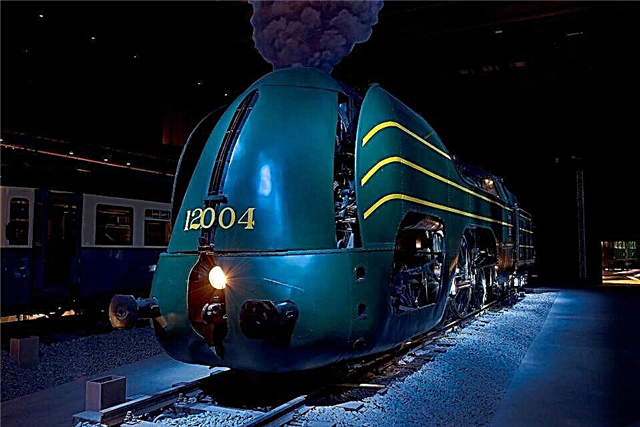
It presents a modern interactive exposition of railway transport from different periods of the twentieth century, located nearby the Gare de Schaerbeek metro station. Acquaintance with it will begin with a monument to the first director of Belgian railways, Jean-Baptiste Mazouy, and then you will find yourself in a wonderful world with originals and models of old steam locomotives, trains and stations in full size. Here you can visit more than 20 locomotives and carriages of different years.
In the driver's cab, it is allowed to pull the handles, press buttons, turn the valves, sit and lie in the carriages on rare seats. The presence at the railway station of the last century is created by the mysterious gloomy lighting, locomotive whistles and the sounds of wagon wheels. The locomotives from 1845 and 1880, painted golden brown, in the first hangar are of particular value.
The second hangar showcases the 1939 Type 12 Atlantic locomotive, which reached speeds of up to 140 km / h. See a real 19th century railway bridge and a monument to the first director of Belgian railways. Open: Tuesday - Sunday from 10.00 to 17.00.
Palace of Karl of Lorraine

The palace, which served as the residence of the Governor-General of the Austrian Netherlands Karl of Lorraine, was built in neoclassical architecture in 1757. Today, the palace has become one of the most visited tourist attractions in Brussels, amazing with the beauty of architecture and interior design. It is impossible to take your eyes off the bas-reliefs in the hall, symbolizing the 4 elements - earth, air, fire and water. On the marble floor of the main hall, visitors admire the rosette, with 28 rays emanating from it, laid out from various types of Belgian marble.
A grand marble staircase, decorated with bas-reliefs and sculptures of Hercules, leads to the rotunda. Today, 5 rooms of the luxurious palace house unique exhibitions representing the art and life of the 18th century. Rare furniture, Chinese porcelain, a collection of medals, silver cutlery, a collection of musical instruments and clocks, give an idea of the life of the aristocrats of that time. The palace is open for visits: on Tuesday, Thursday and Friday from 13.00 to 17.00.
Museum of Natural Sciences
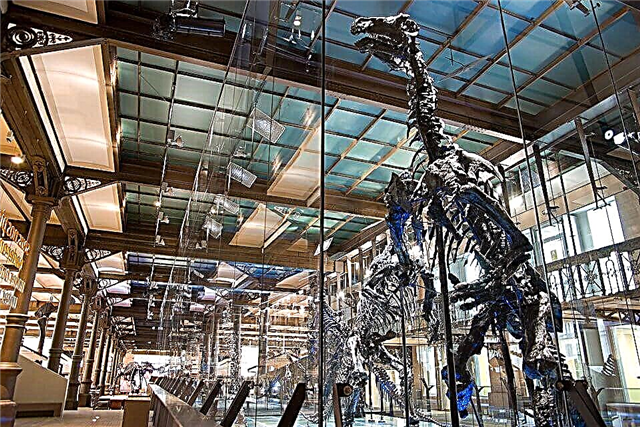
Located next to the building of the European Parliament. It will captivate curious tourists of any age with its unique exhibits. In it, they make a fascinating journey into the distant past of the planet many millennia ago, starting with its ancient inhabitants. A thrilling sightseeing tour of Europe's largest collection of dinosaurs. 30 fragments of the iguanodon skeleton, skeletons of mammoths and extinct birds create an idea of what monstrous animals and amazing birds inhabited the earth.
Educational expositions, tracing the development of man, his tools of labor, hunting and writing. The exposition of the hall of insects and the two thousandth collection of minerals, including moonstones and meteorites, amaze with their species diversity. A highlight is called the largest meteorite in Europe that fell to Earth. Working hours: Tuesday – Friday - from 09.30 to 17.00, Saturday and Sunday - from 10.00 to 18.00.
Museum of Zoology

One of the oldest in Brussels. Its collection, numbering today more than 3 thousand exhibits, began to be created in 1834. Getting acquainted with the unique expositions, one gets an idea of the diversity of the animal world of our planet, from small insects to large mammals. It is curious to see the developmental stages and anatomical features inherent in reptiles, primates and cetaceans.
Anatomical preparations and organs, displayed in alcohol, complement the skeletons of large mammals - a camel, an elephant, a giraffe, a hippopotamus, a buffalo, a deer and a horse. Along with the skeletons of rare and fossil animals, skeletons and stuffed animals of the local fauna are widely represented here. It is proud of the world's largest collection of coleopteran insects. You can get acquainted with the exhibits from 13.00 on odd days of the week: Monday and Tuesday until 16.00, on Wednesday until 17.00.
Museum of Medicine

Located in the Anderlecht district of the Campus Erasme, it belongs to the Faculty of Medicine of the University of Brussels. Here, visitors will be able to trace the various methods of treating human diseases from ancient times to the present day. There are interesting expositions telling about healing with magical and religious rituals.The history of medical practices conducted by Hippocrates, Avicenna, Galen and other physicians of the past is informative. Particularly shocking visitors are the naturalistic appearance of 300 anatomical wax figures illustrating skin and oncological diseases.
Of interest are the expositions showing the treatment methods used in Arab, African and Asian countries on dummies. One of the most shocking expositions is devoted to exhibits demonstrating the frightening state of organs suffering from sexually transmitted diseases. Medieval medical instruments are impressive, especially: for craniotomy, amputation saws, obstetric forceps. Open from Monday to Friday from 13.00 to 16.00. Open for free viewing every first Sunday.
Musical Instrument Museum

On rue Montagne de la Cour, in a four-story building built at the end of the 19th century in Art Nouveau architecture, there is one of the largest musical instruments museum in Europe. More than 8 thousand musical instruments from all over the world display the multifaceted sound palette created by their playing. Each floor displays instruments belonging to a specific era: antiquity, Renaissance, Middle Ages, XIX century and modern times, belonging to the peoples of 5 continents.
The highlight is the bicentennial orchestrion, playing music in the orchestral sound of many instruments. Here it is possible not only to look at musical instruments, but also with the help of headphones connected to them, to hear their voices. It is interesting to visit the musical workshop of stringed instruments. Opening hours: Tuesday-Friday from 9.30 am to 5 pm. Weekends and holidays: 10.00-17.00.
Horta Museum
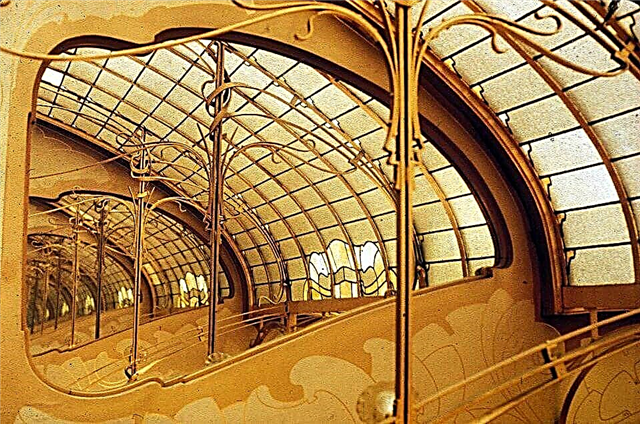
Victor Orth is a renowned Belgian architect who designed buildings in Art Nouveau architecture. They stand out in the urban space with their smooth lines, floral decorations and ornamental facades, creating a charming look of Brussels. Placed in the former master's house, built in 1901 and became his architectural masterpiece. The interior clearly expresses Hortu's style. It conquers with the magic emanating from wall paintings with floral ornaments and twisted lines, the skill of forged decorations on the stairs, the magical flickering of stained glass windows.
The abundance of glass contributes to the filling of rooms with light, causing the illusion of a complete absence of corners in them. In them you will see the personal belongings of the master, furniture in the Art Nouveau style, works of art of that time. After enjoying the interior of the house, the terrace and the conservatory, proceed to the studio to see an exhibition with archival documents, drawings, sketches and tools that the architect worked with. You can visit from Tuesday to Sunday from 14.00 to 17.30.
Belgian Comic Strip Center

The fascination of the Belgians with comics influenced the creation of a Center dedicated to this work in Brussels. It was housed in October 1989 in the Royal District near the Grand Place in an Art Nouveau building designed and built in 1905 by the famous Victor Hort as a textile shop. On an area of 4200 sq. M. hosted exhibits representing the development of this fascinating genre of fine art, from cave paintings to modern digital comics.
There are thousands of works in the comic genre of over 700 Belgian artists and famous comic creators from around the world in 36 languages, there are rooms dedicated to the comics of famous authors. The annual attendance of the center has exceeded 200 thousand people. It works daily from 10.00 to 18.00.
Chocolate and Cocoa Museum

Belgium is rightfully considered the chocolate capital of Europe. Any resident of Brussels will tell a tourist that the real taste of the Belgian capital cannot be experienced without chocolate. An incredibly delicious sweetness that evokes a feeling of happiness in Brussels was dedicated to the Museum of Cocoa and Chocolate. Already by its breathtaking smell, the building is easy to find on Rue de la Tete d'Or near the Grand Place.
The two floors house not only delicious exhibits, but also a showroom and a shop. Here you will learn the fascinating history of chocolate, watch the process of its making, enjoy hot chocolate and, under the guidance of an experienced pastry chef, make your own amazing Belgian delicacy. Open all week except Monday from 10.00 to 16.30.
Museum of the Royal Army and Military History
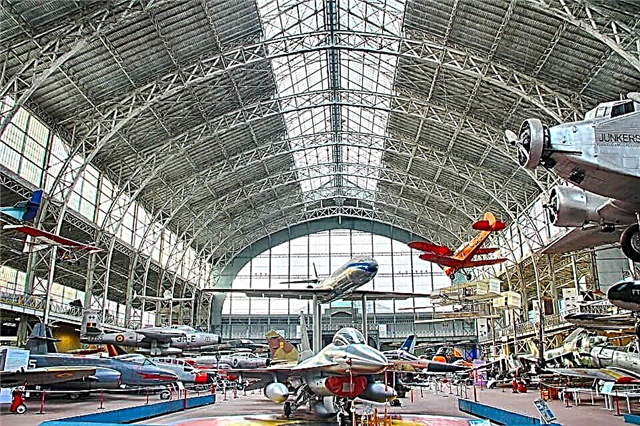
It occupies the left wing of the Arc de Triomphe - the entrance to the Park of the Fiftieth Anniversary. It contains a unique collection of weapons and military-historical artifacts related not only to Belgium, but also to European countries, including Russia. Starting from the Knight's Hall, and ending with the Hall of Modern History, visitors are interested in tracing the path of military equipment, from the Middle Ages to the present day.
The large exposition is presented by the periods of the First and Second World Wars with weapons, military uniforms of the belligerent countries, medals, banners, models of warships and objects showing the life of soldiers in war. Separate rooms are dedicated to the development of aviation, tanks and warships. It opens to visitors at 9.00 and works until 4.45. Break from 12.00 to 13.00.
Fiftieth Park Art Museum
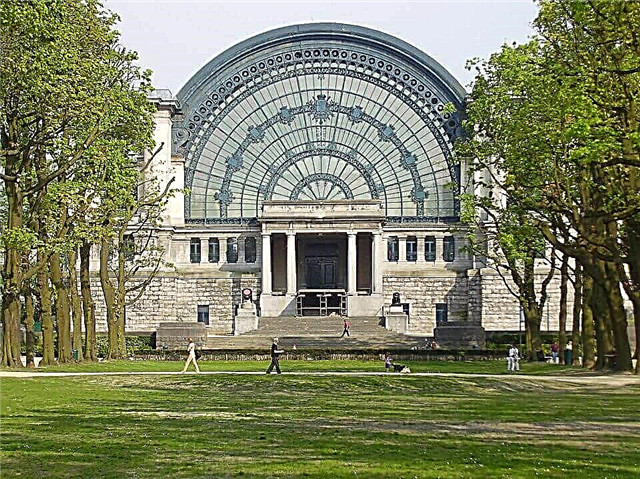
Founded in 1835 and dedicated to art and human history, it is housed in the left wing of the exhibition complex of the same name. Since prehistoric times, it has collected the rarest exhibits of art, in addition to painting, from the five continents of our planet. Of particular interest in the gallery of artifacts are: a fragment with a relief image of Gilgamesh, dating back to the 3rd millennium BC, Syrian mosaics of the 5th century BC. e., Belgian altars of the Middle Ages.
Visitors discover the world of Egyptian culture, amazed by the abundance of sarcophagi and mummies and the variety of ancient art of Greece and the Roman Empire. It is famous for its huge number of exhibits representing the artistic culture of the Middle East, China, Japan, Korea, Polynesia and the American continent before its discovery by Columbus. The exhibits of decorative and applied art from the Middle Ages to the twentieth century are impressive, represented by sculpture, furniture, dishes, fabrics, costumes and ancient carriages. Opening hours: Tuesday-Friday from 9.30 to 17.00, and on weekends from 10.00 to 17.00.
Halleport

Halle City Gate is the only part of the medieval fortress wall of Brussels, left over from the fortification, which was built from 1357 to 1388. Made in the style of architecture typical for the neo-Gothic, they are of cultural and historical value, being under the tutelage of the local authorities, who have placed a museum of history in them. The expositions highlight the history of the construction of the fortress wall and the city.
Several themed rooms are dedicated to the Gothic culture, weapons and armor of the Middle Ages. A separate room is represented by the history of the guilds of Brussels. Halleport's premises are often used for temporary exhibitions and exhibitions. Under the roof, the gate is equipped with an observation deck, from the height of which it is pleasant to enjoy the panorama of the city and take a photo for memory. Opens at 09.30 from Tuesday to Friday and at 10.00 on Saturday and Sunday, closes at 17.00, and closes at 14.00 on December 24 and 31. Closed on public holidays.
Jewish Museum of Belgium
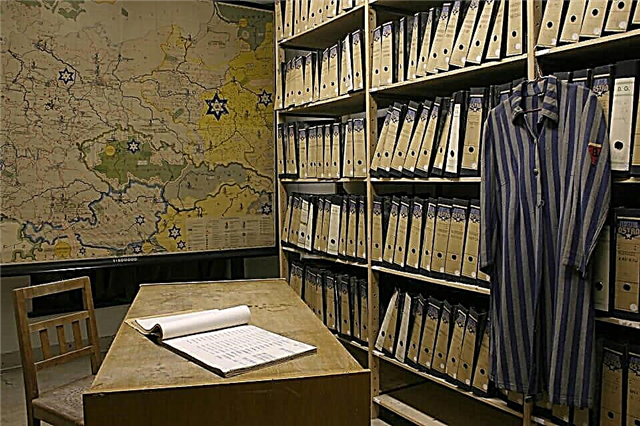
For tourists interested in Jewish culture and traditions of the people, a visit to the Jewish Museum of Belgium, located in the center of Brussels, will be interesting and informative. It is notable for the richest exposition of objects of the Jewish religion and Jewish art collected in the countries of Europe, Asia and Africa. The oldest exhibits of the museum date back to the 18th century.
In the exhibition halls, visitors will see many ritual objects with Jewish symbols and exhibits reflecting the cultural traditions of the people, explaining their rites - circumcision, bar mitzvah and others. Of interest are exhibitions with church and household utensils, antique synagogue furniture, tens of thousands of unique photographs and posters. The library contains more than 25 thousand books on the national art and history of Israel, paintings by Jewish artists. Open: Tuesday - Sunday from 10.00 to 17.00.
House of European History

The House of European History is the youngest museum in Brussels, opened in May 2017. The idea of its creation was proposed in 2007 by Hans Gert Peterring, then head of the European Parliament. Became a symbol of a united Europe that ended the enmity between European countries. It was located in the Parliamentary Quarter in the building of the former Eastman Dental Clinic, reconstructed and completed on three floors.
The permanent exhibition dedicated to the history of Europe in the twentieth century and relations between the countries of the European Union is allocated 4000 m² on 4 floors. It contains more than 1 thousand exhibits provided by 300 European museums and collections. Their detailed descriptions are posted in 24 languages on tablets - interactive guidebooks issued during the excursion. Many interactive exhibits located in all halls are of great interest.
Two floors are dedicated to temporary thematic exhibitions. The House of Europe is open for free visits on Monday from 13.00 to 18.00, from Tuesday to Friday from 9.00 to 18.00, on Saturday and Sunday from 10.00 to 18.00.











